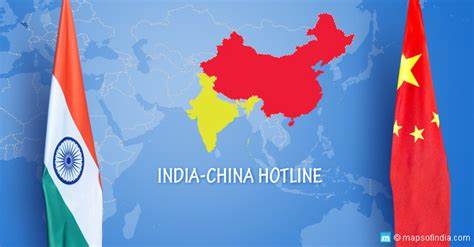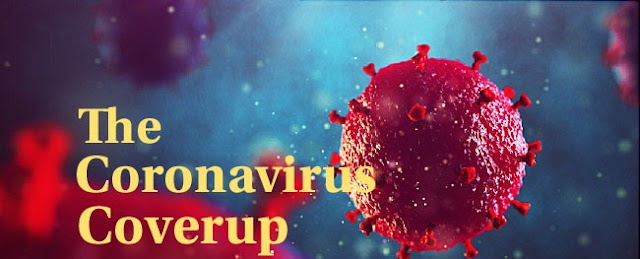Nuclear energy
Nuclear energy has been identified as a
potential contributor to reduce the greenhouse effect gases emissions and
consequently it should play an important role in the electricity production mix
of every country. Developing countries can also find in nuclear energy the
solution to power their expected growth. Hence it has become very important to
study about nuclear energy. In this assignment we will discuss about how this
nuclear energy is produced, and how much energy is released from fission of
U-235. For this first we will see how neutron induces fission and how it
results in a chain reaction and further we will learn working principle of a
nuclear reactor and neutron cycle in thermal neutron reactor.
Contents
Introduction
Atoms are the tiny
particles in the molecules that make up gases, liquids, and solids. Atoms
themselves are made up of three particles called protons, neutrons, and
electrons. An atom has a nucleus (or core) containing protons and neutrons,
which is surrounded by electrons. Protons carry a positive electrical charge
and electrons carry a negative electrical charge. Neutrons do not have an
electrical charge. Enormous energy is present in the bonds that hold the
nucleus together. This nuclear energy can be released when those bonds are
broken. The bonds can be broken through nuclear fission, and this energy can be
used to produce electricity.
In nuclear fission, atoms are split apart, which releases
energy. All nuclear power plants use nuclear fission, and most nuclear power
plants use uranium atoms. During nuclear fission, a neutron collides with a
uranium atom and splits it, releasing a large amount of energy in the form of
heat and radiation. More neutrons are also released when a uranium atom split.
These neutrons continue to collide with other uranium atoms, and the process
repeats itself over and over again. This process is called a nuclear chain
reaction. This reaction is controlled in nuclear power plant reactors to
produce a desired amount of heat. Nuclear energy can also be released in
nuclear fusion, where atoms are combined or fused together to form a larger
atom. Fusion is the source of energy in the sun and stars. Uranium is the fuel most widely used by nuclear plants for nuclear
fission. Uranium is considered a non-renewable energy source, even though it is
a common metal found in rocks worldwide. Nuclear power plants use a certain
kind of uranium, referred to as U-235, for fuel because its atoms are easily
split apart. Although uranium is about 100 times more common than silver, U-235
is relatively rare.
Neutron induced fission.
The reaction leading to the discovery of
fission in Jan. 1939 by O. Hahn and F. Strassman was neutron induced fission of
Uranium. In this process a heavy nucleus decays into two fragments of
comparable mass. It was discussed by L.Meitner in terms of liquid drop which
becomes deformed and beyond a critical deformation is breaking apart into pieces,
the fission fragments. The fragment emits secondary neutrons. These neutrons
then may induce a second generation of fission events. This process is known as
chain reaction. This process is described in fig.1

Figure 1 Scheme of neutron
induced fission.
The total energy release in a fission event may be calculated from
the difference in the rest masses of the reactants (e.g., 235U + n) and the final
stable products (e.g., 93Nb + 141Pr + 2n). The energy
equivalent of this mass difference is given by the Einstein relation, E
= mc2. The total energy release depends on the
mass split, but a typical fission event would have the total energy release
distributed approximately as follows for the major components in the thermal
neutron-induced fission of uranium-235:
Form
of Energy Released
|
Amount
of Energy Released (MeV)
|
Kinetic
energy of two fission fragments
|
168
|
Immediate
gamma rays
|
7
|
Delayed
gamma rays
|
3-12
|
Fission
neutrons
|
5
|
Gamma rays
|
7
|
Beta
particles
|
8
|
Neutrons
|
12
|
Average
total energy released
|
215MeV
|
This energy is
released on a time scale of about 10-12 second and is
called the prompt energy release. It is largely converted to heat within an operating reactor and is used for power
generation. Also, there is a delayed release of energy from the radioactive
decay of the fission products varying in half-life from fractions of a second
to many years. The shorter-lived species decay in the reactor, and their energy
adds to the heat generated; however, the longer-lived species remain
radioactive and pose a problem in the handling and disposition of the reactor fuel
elements when they need to be replaced.
Asymmetrical fission-mass
The fission results in two massive fission
fragments having equal and opposite momentum. This fission fragments are
neutron rich. They have too many neurons to be stable hence each fragment may
emit one or two neutrons in a period of less than 10-15 sec. on an
average three neutron are emitted per fission of uranium. These neutrons are
called prompt neutrons. From these we can also conclude that these fission
fragments must exhibit beta activity to reduce the neutron count.
There are many ways for 235U to
undergo fission. It is found that there are thirty modes of fission. Every mode
gives different pair of fission fragments. Most of these fragments are
The fission yield is defined as.
Fig 2. Shows plot of percent fission
yield and mass No. (A) for 235U.
Figure 2
It is seen from fig. 2 that most probable values for the mass no.
for the two fission fragments
are about A = 95 and A = 139 corresponding atomic number for them are Z = 42
and Z = 57 respectively. For A = 117 yield is minimum which is for symmetrical
fission having atomic number Z = 50 and as we know 50 is a magic number.
Nuclear reactors
Nuclear reactors generate energy through fission,
the process by which an atomic nucleus splits into two or more smaller nuclei.
During fission, a small amount of mass is converted into energy, which can be
used to power a generator to create electricity. In order to harness this
energy, a controlled chain reaction is required for fission to take place. When
a uranium nucleus in a reactor splits, it produces two or more neutrons that
can then be absorbed by other nuclei, causing them to undergo fission as well.
More neutrons are released in turn and continuous fission is achieved.
Neutrons produced by fission have high energies and
move extremely quickly. These so-called fast neutrons do not cause fission as
efficiently as slower-moving ones so they are slowed down in most reactors by
the process of moderation. A liquid or gas moderator, commonly water or helium,
cools the neutrons to optimum energies for causing fission. These slower
neutrons are also called thermal neutrons because they are brought to the same
temperature as the surrounding coolant as shown in Fig 3
Figure 3 Nuclear reactors
In contrast to most normal nuclear
reactors, however, a fast reactor uses a coolant that is not an efficient
moderator, such as liquid sodium, so its neutrons remain high-energy. Although
these fast neutrons are not as good at causing fission, they are readily
captured by an isotope of uranium (U238), which then
becomes plutonium (Pu239). This plutonium isotope can
be reprocessed and used as more reactor fuel or in the production of nuclear
weapons. Reactors can be designed to maximize plutonium production, and in some
cases, they actually produce more fuel than they consume. These reactors are
called breeder reactors. A fast-breeder nuclear reactor produces
more fuel than it consumes, while generating energy. Conventional reactors use
uranium as fuel and produce some plutonium. Breeders produce much more
plutonium, which can be separated and reused as fuel. The working of a breeder
reactor is shown in Fig. 4
Figure
4 breeder reactor
The
sodium surrounding the core flows through a heat exchanger, cluster of
thin-walled metal tubes and transfer its energy to a separate stream of sodium.
The heat then passes through a steam generator. (If there is a leak and the
sodium come into contact with the water or air sodium burns). The steam
generated is then used to run the turbine which then produces electricity.
Conclusion
As we have seen nuclear energy is a potential
contributor to reduce the greenhouse effect gases emissions and solve energy
problems, Nuclear power plants use “nuclear
fission” (the process of splitting an atom in two). “Nuclear fusion” (the
process of combining atoms into one) has the potential to be safer but has not
yet been developed to operate within a large power plant. Nuclear energy comes from uranium, a
non-renewable resource that must be mined. Typical fission events release about
two hundred million eV (200 MeV) of energy, the equivalent of roughly
>2 trillion Kelvin, for each fission event. (When a uranium nucleus fission into
two daughter nuclei fragments, about 0.1 percent of the mass of the uranium
nucleus appears as the fission energy of ~200 MeV.). It is also observed
that most probable values for the mass no. for the two
fission fragments are about 95 and 139. And minimum for symmetrical fission
which is for A =117
In
a fission reactor, neutrons produced by fission of fuel atoms are used to
induce yet more fissions, to sustain a controllable amount of energy release.
nuclear reactors generally convert the kinetic energy of fission products into
heat, which is used to heat a working fluid and drive a heat engine that
generates mechanical or electrical power
Reference
Anon.,
n.d. nytimes. [Online]
Available at: https://archive.nytimes.com/www.nytimes.com/interactive/2011/06/18/world/asia/JAPAN_NUCLEAR.html?_r=0
[Accessed 20 3 2019].
Available at: https://archive.nytimes.com/www.nytimes.com/interactive/2011/06/18/world/asia/JAPAN_NUCLEAR.html?_r=0
[Accessed 20 3 2019].
Anon., n.d. scientificamerican.
[Online]
Available at: https://www.scientificamerican.com/article/how-do-fast-breeder-react/
[Accessed 20 3 2019].
Available at: https://www.scientificamerican.com/article/how-do-fast-breeder-react/
[Accessed 20 3 2019].
energy, U. d. o., 2018.
energyexplained. [Online]
Available at: https://www.eia.gov/energyexplained/index.php?page=nuclear_home
[Accessed 18 3 2019].
Available at: https://www.eia.gov/energyexplained/index.php?page=nuclear_home
[Accessed 18 3 2019].
F. Gönnenwein ,
2014. sciencesconf. [Online]
Available at: https://ejc2014.sciencesconf.org/conference/ejc2014/pages/goennewein2.pdf
[Accessed 24 3 2019].
Available at: https://ejc2014.sciencesconf.org/conference/ejc2014/pages/goennewein2.pdf
[Accessed 24 3 2019].
Steinberg, E. P., n.d. nuclear-fission.
[Online]
Available at: https://www.britannica.com/science/nuclear-fission
[Accessed 24 3 2019].
Available at: https://www.britannica.com/science/nuclear-fission
[Accessed 24 3 2019].






Comments
Post a Comment